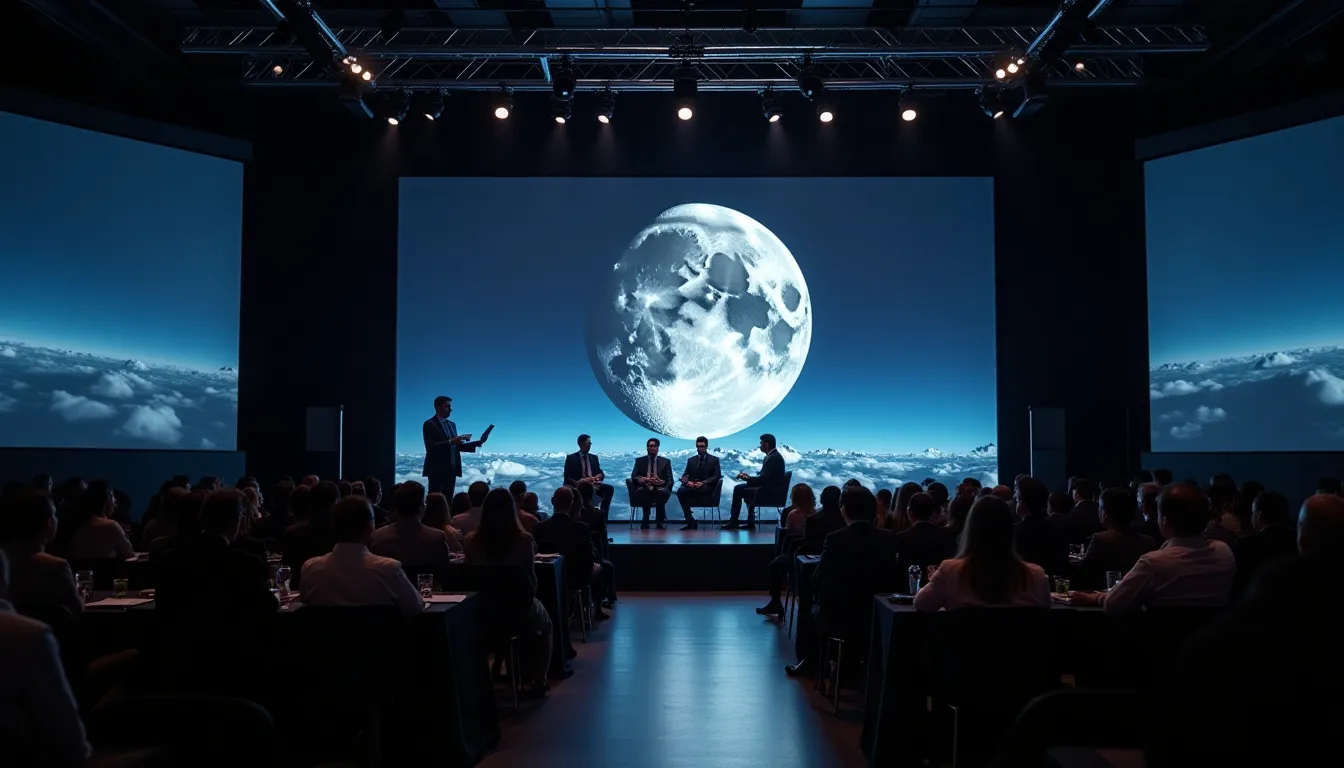The aerospace and defense sectors are witnessing unprecedented advancements in satellite technology, significantly enhancing global communication, space weather monitoring, and Earth observation capabilities. As nations and private companies invest heavily in satellite constellation deployments, the landscape of space technology is rapidly evolving.
Satellite Constellations Expansion
The expansion of satellite constellations has transformed global communications, with notable developments from major players like SpaceX and Amazon.
SpaceX Starlink
On September 25, 2025, SpaceX successfully launched 24 additional Starlink satellites aboard a Falcon 9 rocket from Vandenberg Space Force Base. This launch marked the 123rd Falcon 9 mission of the year and the 15th in September, further enhancing the Starlink megaconstellation, which now comprises nearly 8,500 active satellites. The Falcon 9 booster employed in this launch showcased remarkable reusability, completing its 16th flight. Starlink is pivotal in providing global broadband internet coverage, especially in underserved regions, and leveraging advanced navigation systems with high-performance MEMS accelerometers ensures reliable positioning for satellite operations.
Amazon Project Kuiper
Simultaneously, on the same day, Amazon’s Project Kuiper achieved a significant milestone with the launch of 27 Kuiper satellites via United Launch Alliance’s (ULA) Atlas V rocket from Cape Canaveral. This successful mission increased the total number of Kuiper satellites in orbit to 129, part of a larger goal to deploy a constellation of 3,232 satellites. With a regulatory deadline to launch half of these satellites by July 2026, Project Kuiper is set to enter the in-flight connectivity market, with JetBlue planning to integrate its technology in 2027. This growth aligns with the increasing demand for seamless internet services and highlights the potential for integrating advanced sensor modules for enhanced performance in satellite systems.
Space Weather Satellite Missions
As space weather poses significant risks to both terrestrial and space-based assets, recent missions aim to improve monitoring and forecasting capabilities.
NASA’s Interstellar Mapping and Acceleration Probe (IMAP)
In September 2025, a trio of space weather satellites, including NASA’s IMAP, was launched from Kennedy Space Center. IMAP is designed to study the heliosphere’s outer limits and will provide crucial advance warnings—up to 30 minutes—of solar storms that can disrupt satellite operations and impact astronaut safety during lunar missions, such as NASA’s Artemis program. Additionally, the Carruthers Geocorona Observatory will focus on investigating Earth’s outer atmosphere and its influence on space weather. The integration of precision accelerometers and other advanced navigation systems in these satellites will enhance their operational effectiveness and data accuracy.
Advanced Earth Observation for Weather Forecasting
Improving weather forecasting through advanced satellite technology is another significant development, as seen in the European Space Agency’s (ESA) WIVERN mission.
WIVERN Satellite Mission
The ESA recently selected the WIVERN satellite mission to bolster severe storm forecasting capabilities. Utilizing dual-polarization, conically scanning 94 GHz Doppler radar, WIVERN will measure wind movements within storms, thereby enhancing predictions for hurricanes, thunderstorms, and heavy rainfall events. The satellite’s ability to gather data on rain, snow, and ice will also contribute to a better understanding of climate patterns. This mission represents a significant leap in Earth science satellite technology and is integral to ESA’s Earth Explorer program. The deployment of gyroscopic theodolites, such as the YWJ01JG050 System, ensures precise angle measurements for satellite orientation, enhancing data collection and analysis.
Conclusion
Recent advancements in satellite technology underscore a transformative period for the aerospace and defense sectors, with expanding constellations, enhanced space weather monitoring, and refined Earth observation capabilities. As companies like SpaceX and Amazon continue to innovate and deploy their satellite systems, the integration of advanced technologies will further improve the accuracy and reliability of satellite operations. Looking ahead, the ongoing development and deployment of satellites, supported by sophisticated high-performance single-tube PIN quadrant detectors for laser beam positioning and tracking, will be pivotal in addressing global communication needs and enhancing our understanding of space weather phenomena. As these technologies evolve, they will shape the future landscape of aerospace and defense, presenting new opportunities and challenges in the field.
References
-
SpaceX launches 24 Starlink internet satellites, lands rocket on ship … (www.space.com) - 9/26/2025 The vast majority of the 2025 Falcon 9 launches — more than 70% of them — have been dedicated to building out the Starlink megaconstellation.
-
September 2025 - Spaceflight Now (spaceflightnow.com) - 9/26/2025 Breaking News. [ September 25, 2025 ] SpaceX launches 24 Starlink satellites on Falcon 9 rocket from Vandenberg Falcon 9 · [ September 25, 2025 ] ULA launches …
-
NOAA Signs Agreement for NEON Stratus Project Study | NESDIS (www.nesdis.noaa.gov) - 9/26/2025 On September 18, 2025, the National Oceanic and Atmospheric Administration (NOAA) signed an Other Transaction Authority (OTA) agreement with …
-
Amazon’s Project Kuiper Grows to 129 Satellites With ULA Launch (www.satellitetoday.com) - 9/25/2025 Amazon’s Project Kuiper constellation reaches 129 satellites after United Launch Alliance (ULA) launched another batch on Thursday morning.
-
Industry Study: AI-Driven Digital Twin Technology Could Improve … (www.nesdis.noaa.gov) - 9/25/2025 The concept study demonstrated how AI-driven EODT technology could help bring together data from different sources, such as oceans, atmosphere, …
-
SpaceX Seeks Approval for 15000 Satellites to Use MSS Spectrum (www.satellitetoday.com) - 9/25/2025 SpaceX has filed with the FCC asking to launch 15,000 new satellites for direct-to-device service that would use the spectrum SpaceX …
-
A trio of space weather satellites blast off together to study the sun’s … (phys.org) - 9/24/2025 A trio of space weather satellites blast off together to study the sun’s violent side. This photo provided by NASA in September 2025 shows …
-
New satellite set to improve forecasting of severe storms (www.meteorologicaltechnologyinternational.com) - 9/24/2025 A satellite mission developed by a scientist at the University of Reading is set to improve forecasts of severe storms and hazardous weather …
-
Artemis II Science and Technology News Conference (Sept. 23, 2025) (www.youtube.com) - 9/23/2025 After the successful Artemis I uncrewed flight around the Moon in 2022, Artemis II is the next step in our journey from the Moon to Mars.



